Conference visit to Chardale
Chester Holmes, New Zealand Tree Grower August 2012.
Chardale is a gem of a property at Hillend just north of Balclutha – and the South Pole. Owned by Allan Roulston, it has been in the family since 1919, with Allan’s father leading the way in 1956 with radiata pine plantings.
The conference attendees arrived by coach and were fairly quickly shepherded on to a convoy of 12 or so vehicles for a well-planned sightseeing trip around the farm. We were advised that the property is referred to locally as pleurisy hill. Given the elevation, and despite the sunshine and relatively low wind, it soon became apparent that this was definitely a place to take ample precautions with the weather.
A lot of shelter
On the 400 hectares Allan runs Perendale sheep and has a 50 sow outdoor piggery, along with a Charolais stud. Dennis Guild manages the tree planting, choosing trees to suit Allan’s sometimes unusual prescriptions. These are not odd choices – they all have purposes, ranging from colour themes to bird and bee food, to stock shelter.
The shelter on this farm cannot be understated. During the storms two years ago,Allan still achieved 140 per cent lambing despite the loss of a million lambs in Southland and Otago at the time.
Streams have been fenced off on both sides. This has left the waterways to be planted in shelter trees. Freshwater crayfish and eels are now returning, which shows the water quality is much improved and in fact is better quality on exiting the farm than when it arrives. One point made during the conference a couple of times was that it was important to get water quality independently measured before and after changes are made.
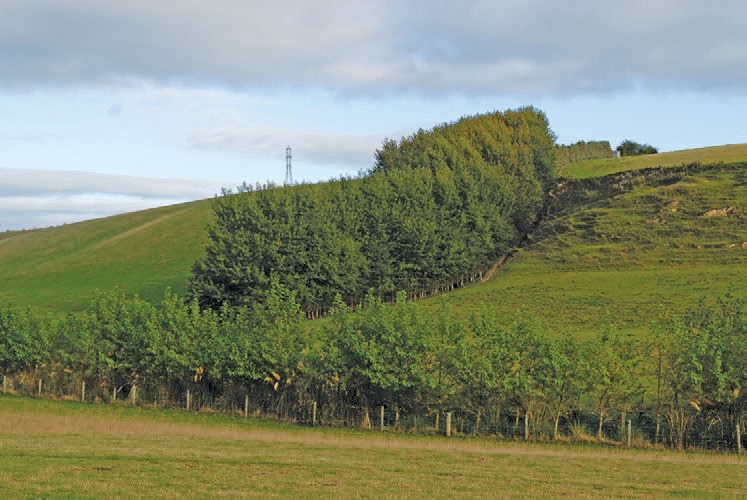
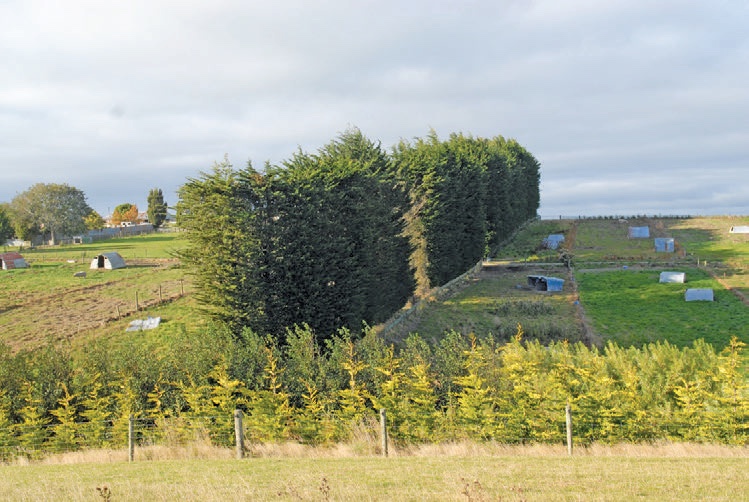
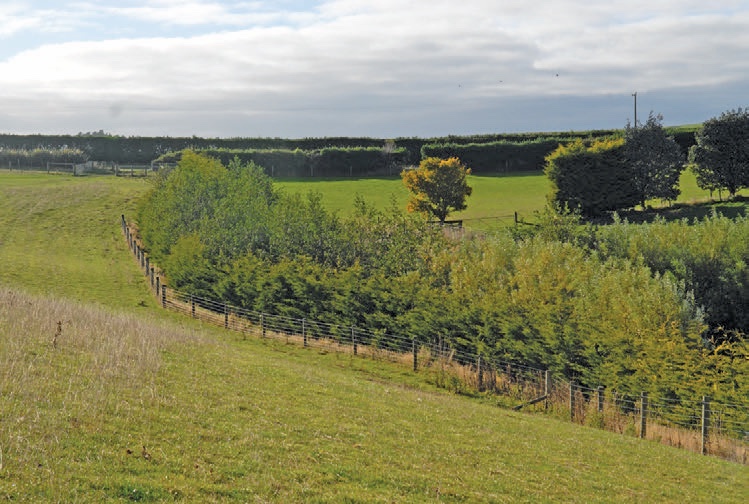
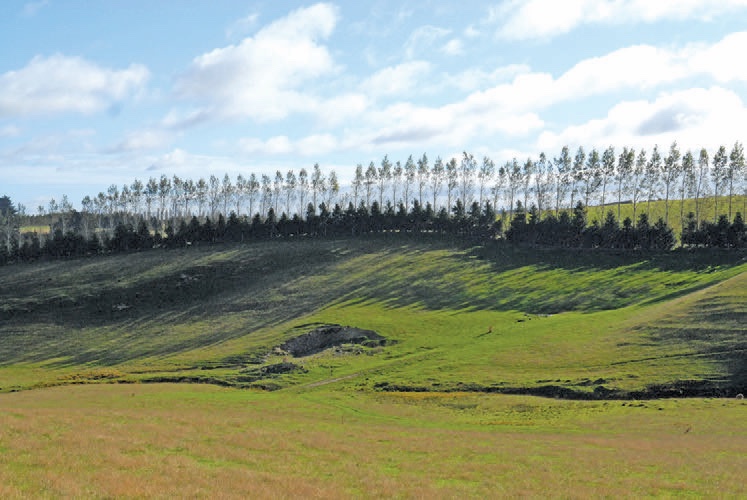
Allan was spurred on to protect the streams from run-off following a visit from Balance Awards inspector Paul Marsh, whose observation that the streams needed protecting was acted on that very day, with fencing going in immediately. Within three years the quality was greatly improved.
Plantings in these areas include toetoe and balsam poplar as Allan likes their smell in spring. Willows have also been planted but it can be difficult in the wetter areas to get trees established due to the rampant grass growth and frosts.
Steep gullies
The land could be described as rolling tops falling to steep gullies with the soils being Warapa soils blown during glacial era from Central Otago. The underlying schist leads to under runners – streams which disappear underground and undermine the surface. They can be very dangerous, but very good for growing trees as they get their roots into the schist.
The gullies have been retired into trees with the shelter leading to an increase in lambing. Many of the shelter belts have been established with a layered approach, often red alder combined with other species. Sequoia mixed with larch or Japanese larch planted in 2005 is for timber.
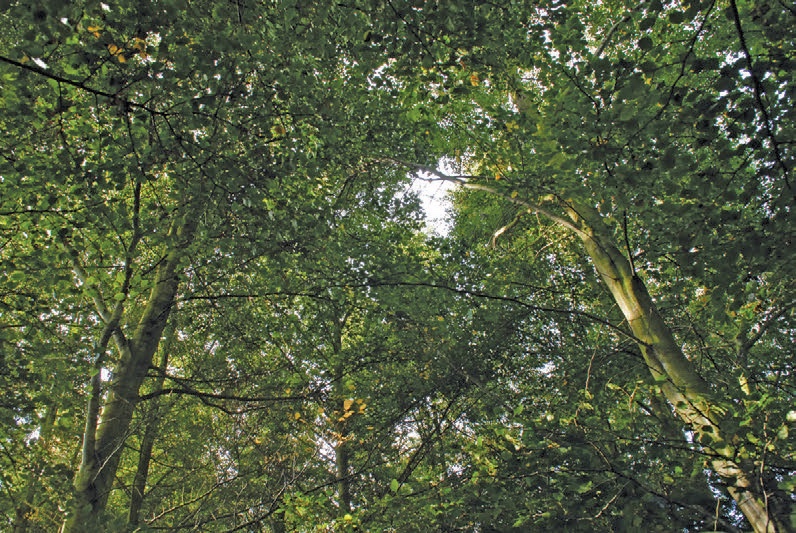
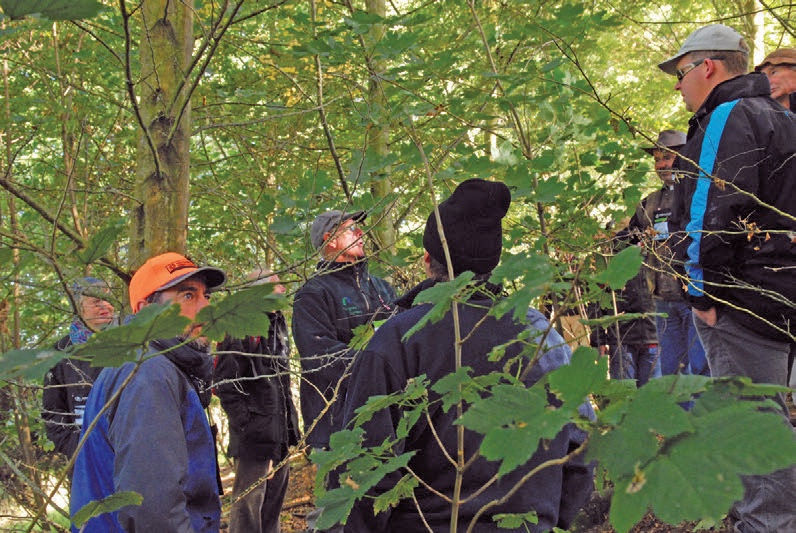
Pigs and beech
The free range sows have A-shaped shelters houses to retire into, and are separated into two or three sows in each fenced area. Following another visit from the Balance inspector, Allan was advised that the effluent from the piggery would soon affect the stream. This prompted the clearance of the pine producing a useful profit, the establishment of shelter for the pigs and the use of willow, silver birch and Leylandii to contain the effluent.
One area of shelter that is of special note is the red beech. This was planted in 1996 and is now 15 metres high. It was originally inter-planted with sycamore which grew too vigorously and has been cut out twice as it grows up from the cut stumps. The beech are fairly uniform and inevitably a discussion as to the way forward – prune now, thin now or leave them longer.
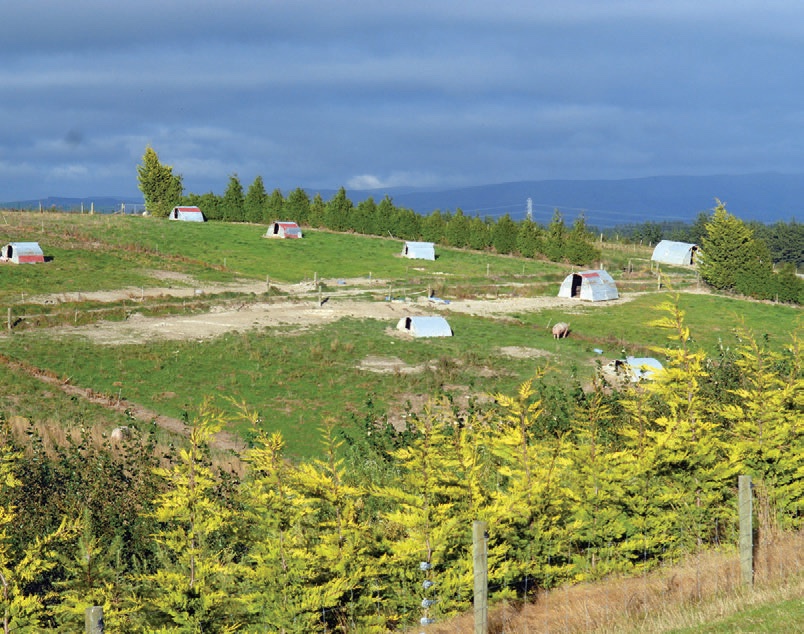
The debate at this point was whether to prune. Following a knowledgeable contribution from John Wardle who is sustainably managing beech, and John Purey-Cust, who is milling red beech, it was agreed that the timber with small green knots is much more preferable than larger dead knots that fall out. This will be an already familiar recipe but a piece of knowledge we seem to need to learn with each species.
Golden macrocarpa
Another shelterbelt consisted of golden macrocarpa at a low level with poplar poking through providing a permeable high shelter. The macrocarpa had been pruned using hedge trimmers to give a relatively dense shelter. This looked quite stunning from a distance and is good shelter for ewes in the worst of the weather.
There is a significant area of Douglas fir but in surprisingly poor form. The tree seed source was the main culprit, leading to significant stem wobble and lean, as well as heavy bifurcation. The trees have not been pruned, and while there are plenty of dead lower branches, these are considered too costly to remove and not worth the effort.
Douglas fir bark and timber are easily bruised, so thinning would have to be very carefully done. It would be necessary to extract the trees as removing the slash would be difficult later on.
Plantings of macrocarpa have more recently given way to Ferndown due to concerns that canker would make its way down as far as Otago. Ferndown is a vigorous leyland clone, a cross between yellow cedar Cupressus nootkatensis and macrocarpa. It is growing well but being outpaced in places by the Ovens cypress, a cross between yellow cedar and lusitanica, with which it is interspersed.
Colourful and attractive
Eucalyptus cordata has been used extensively for shelter across the farm. It grows fast, tolerates wind and has white flowers which provide good bee food in winter and prefers cooler, wetter sites. Graham Milligan revealed that it is Milligan’s seeds biggest seller. It grows well at Chardale.
Other plantings include American oak, Italian alder, pin oak on wetter spots interplanted with Corsican pine. Also recently established was an area of maples for their yellow and red autumn colours. A so called white forest has been established using various species of birch. A blue tinged forest has been established using Leyland cypress Naylor’s blue and Superl, complementing the Douglas fir.
A farm to remember
We retired for a very hearty lunch. Rob had spit roasted two of the pigs and the fine salads, breads and vegetables were well received with not much left to recycle to the pigs. Rob just had enough time to show some of us around his new passion – the garden. He has only been working on this for a year and you can see its going to be yet another feature of the farm to look at in years to come.
This really is a farm to remember. Everything looked healthy, well-tended and worth a visit.

 Farm Forestry New Zealand
Farm Forestry New Zealand

